Throughout the ages man has run into barriers and overcome them. Whether we walk, ride a bike, drive a car, bus, or motorcycle, water is a barrier that impedes our progress. Jesus may have walked on it, and Moses spread it, but most of us need a way to cross over it. I can’t tell you when or who built the first bridge, probably Mrs. Ingenuity, I read once that ingenuity is the mother of invention. The ingenuity required throughout centuries of bridge building has produced a multitude of fascinating inventions.
Wherever we travel, if there is water I love to check out in the bridges. The architecture is always interesting and the impact of bridge design on the aesthetics and popularity of an area cannot be underestimated. In reviewing pictures I decided it might be of interest to share some of my favorite bridges we have encountered. We’ll begin close to my home in Phoenix, with the Mill Avenue bridges in Tempe, Arizona
First on my list of Beautiful Bridges is:
Mill Avenue Bridge – Tempe, Arizona
The original Mill Street Bridge (pictured below) began construction in 1931 and was dedicated May 1, 1933. After many years of service it was added to the Tempe Historic Property Register on November 4, 1999. A second motor-traffic-bridge opened in 1994. Today the Mill Avenue Bridges consist of two traffic bridges with two rail bridges located slightly downstream. The original rail bridge has accommodated heavy trains for many years and in 2008 a new bridge was constructed to accommodate the Phoenix Light Rail system.
Longfellow Bridge – Boston, Massachusetts
It is easily understood why locals have nicknamed this bridge The Salt and Pepper Bridge. The four center pillars would look good in any table setting. The Longfellow Bridge crosses the Charles River connecting Boston’s Beacon Hill neighborhood with the Kendall Square area of Cambridge, Massachusetts. Built as the Cambridge Bridge, it began construction in July 1900 and opened for traffic on August 3, 1906. In 1927, this one-half mile stretch of bridge was renamed the Longfellow Bridge in honor of Henry Wadsworth Longfellow. The photographs below were taken from the Sky Walk observatory located on the 50th floor of the Prudential Center.
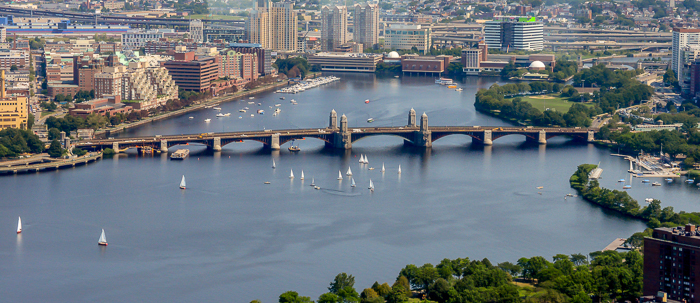
The Longfellow Bridge, connecting Boston’s Beacon Hill neighborhood (right) with the Kendall Square area of Cambridge, Massachusetts on the left.
Manhattan Bridge, New York, New York
Travel a bit farther east and you arrive in the largest city in the United States, New York City.
This 6,855 feet (2,089 meters) long suspension bridge spans the East River connecting southeastern Manhattan with western Brooklyn, two prominent boroughs of New York City. First opened in 1909 after eight years of construction, it consists of a double-deck motorway with four lanes on top and three lanes on the bottom. The bridge also hosts four subway lines, a pedestrian lane, and a separate bike way.
Although this bridge was built later than the Brooklyn Bridge and certainly has less notoriety, its position on the river often presents it at the forefront of panoramas of the famous city.
Lions Gate Bridge – Vancouver, BC, Canada
Back to the West Coast and north to Vancouver, BC, we visit Lions Gate Bridge. This mile long suspension bridge with a main span of 473 m (1,550 ft) is located at Prospect Point in Stanley Park in Vancouver, British Columbia. Spanning the Burrard Inlet at First Narrows, it was connects the City of Vancouver with the cities of North Vancouver, and West Vancouver.
Construction began March 31, 1937 and the bridge opened to traffic on November 14, 1938. It had a royal opening on May 29, 1939 when King George VI and Queen Elizabeth officially dedicated it. The bridge was privately funded by the wealthy Guinness family who paid $5,873,837.17 for its construction in 1937-38. Remarkably, the Guinness family sold it to the city of Vancouver in 1955 for that exact amount.
Stanley Park is one of the picturesque areas of Vancouver and the view from Prospect Point is worth the visit. Be sure and take time for a gelato served from the vendor there.
Blackfriars Bridge – London, England
After nine years of construction, the”William Pitt Bridge” was open to the public in 1769, thus becoming the third crossing of the River Thames in this growing portion of London. The bridge was later named the Blackfriers Bridge, taking its name from the Blackfriers Monastery located near by. The span in use today replaced the original when it was discovered that the original cement used was of such inferior quality it would be too costly and time consuming to be repaired. It was opened by 1869 by Queen Victoria.
Of all the beautiful bridges in this area, I am drawn to the mixture of color, trellis work and columns, and the ornate yet simple design of this beautiful bridge. Here it is captured against the billowing clouds of a typical London day with St. Paul’s Cathedral peeking up from behind.
Tower Bridge – London, England
No visit to London would be complete without a visit to the Tower of London and the iconic Tower Bridge adjacent to it.
The eight year long construction process of this bridge enlisted five major contractors and the relentless labor of 432 construction workers.
Two iconic towers, clad in Portland stone, encase massive piers sunk into the river bed to support over 11,000 tons of steel used to provided its framework. Originally, this sophisticated combination of the bascule and suspension type bridges was operated by hydraulics, using steam to power the mechanisms. However, in 1974 they were replaced with the current electro-hydraulic drive system.
Today, you can cross the bridge by motor vehicle or on foot at no cost. The towers and upper walkways may be accessed as part of a paid visit to the Tower Bridge Exhibition. I love to stand by the River Thames and watch as the bridge raises and ships pass under this magnificent structure.
Ponte Vecchio Bridge – Florence, Italy
Next we travel to Florence, Italy for one of the most picturesque bridges in Europe.
Day or night, this Medieval stone arch bridge over the Arno River is inspiring to visit. Among the most photographed bridges in the world, it is picturesque from any vantage point.
Built in 1345, it represents a first for the western world and one of the outstanding engineering achievements of the European Middle Ages. Because of design, the segmental arch bridge takes fewer piers than the semicircular arch bridge build by the Romans of that day. This allows more water flow with less obstruction and less waterway restrictions.
Early recordings speak of butchers and merchants gathered on the open bridge displaying their goods. In the seventeenth century the bridge was covered and the shops we enjoy today began to appear. Once predominantly gold merchants, today the bridge is crowded with tourists tempted by a wide variety of goods. We outfitted our family with Italian themed t-shirts.
We love to stroll to the center of the bridge in the evening and enjoy the local talent as they present their music for the gathered crowds.

The Ponte Vecchio (“Old Bridge”) spans the Arno River, in Florence, Italy and dates back to Roman times.
Canal Rocker Bridge – Amsterdam, The Netherlands
I’ll leave you with one of more than 1,500 bridges over the vast canals of Amsterdam, capital of the The Netherlands. From ancient to modern, they range from modest to outlandish. Whether it’s the Magere Brug (Skinny Bridge), Nescio Bridge, Torensluis Bridge, Python Bridge, or the Jan Schaefer Bridge, they all have a purpose and add to the mystique of the Amsterdam canals. I love them all, but relish the small, discrete, everyday use bridges that cross the areas extensive waters.
The icon bridge on the Home Page is the Millennium Bridge in London. Click here to view this bridge.
It’s a big world we live in and these nine bridges make up a small portion of the bridges we have visited in our limited jaunts. However, I would love to hear comments on your favorite bridges around the world. [printfriendly]
Follow us on social media!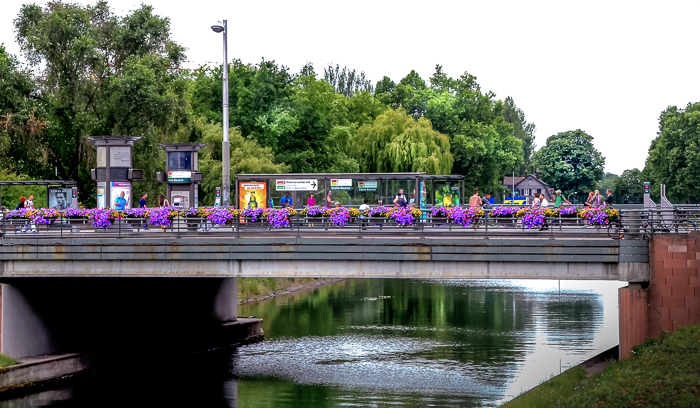
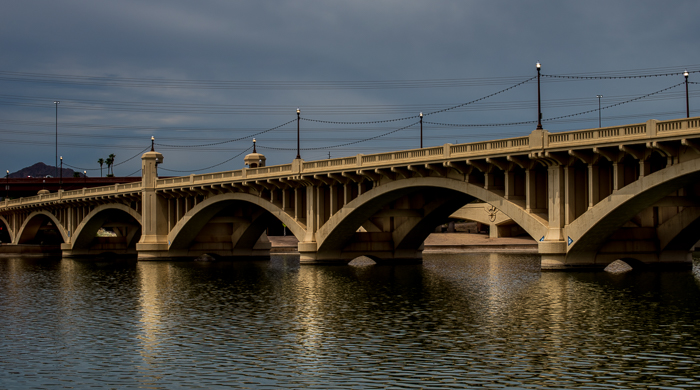

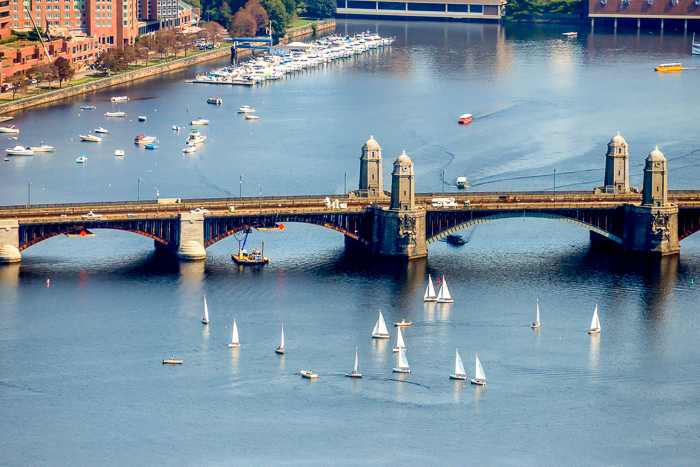
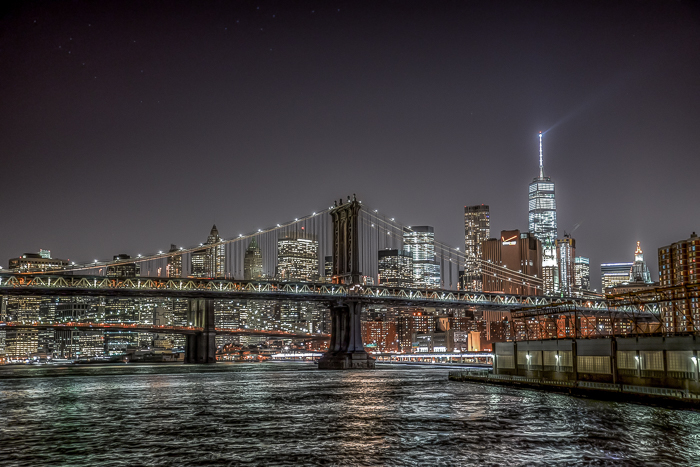

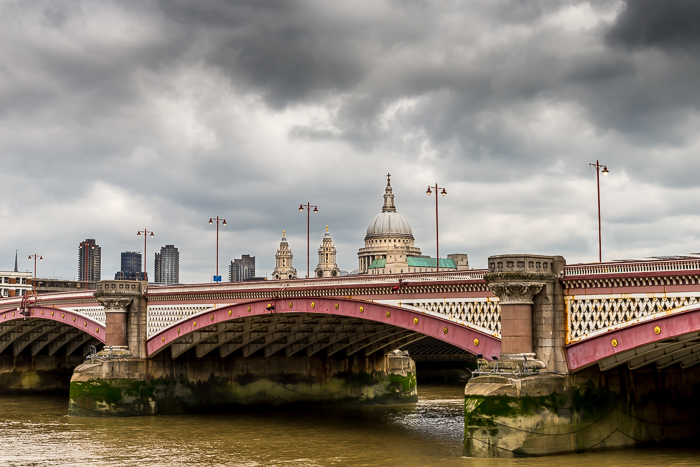
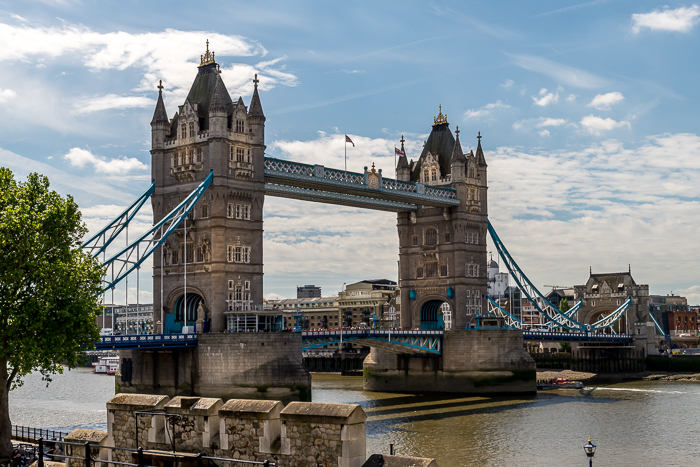
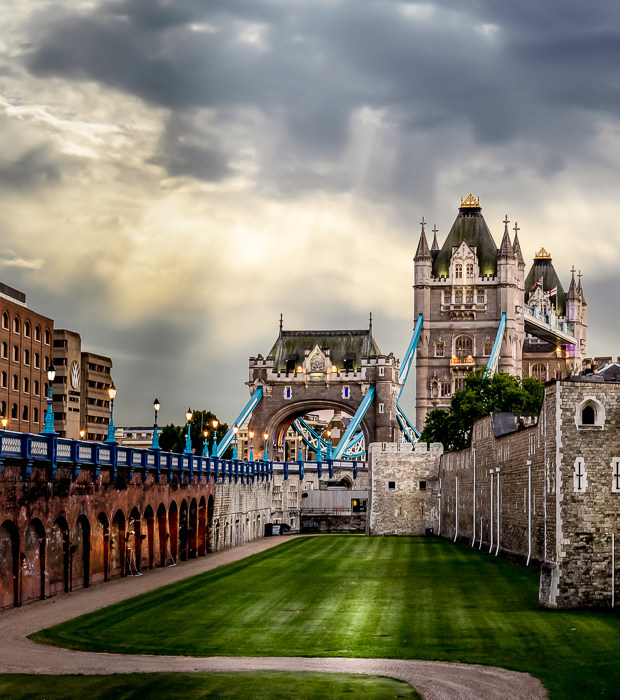
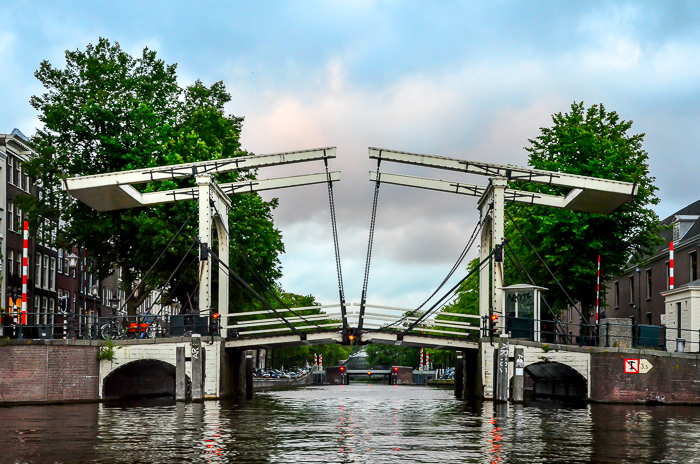
No comments yet.